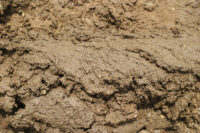I was sitting on the couch with granddaughter Isabelle listening to her talk about numbers the other day – how ten is a bigger number than one, that one-hundred is even bigger, and that a million is even bigger than that. Suddenly she blurted out “infinity!” My mind stopped for an instant; I ‘d never mentioned infinity to her myself, but perhaps she’d heard the term at preschool.
“What can you tell me about infinity?” I asked Isabelle. “It’s a really, really, really, really, really big number,” she said. “That’s true,” I replied, “but infinity is so big it’s bigger than any number.” She thought for a second. “Like a path with no end,” she said, beaming. “That’s it!” I exclaimed, “You’ve got it!”
There may well be other four-year-olds who understand infinity, but I’ve not had those conversations; I suspect that many adults would find discussions about infinity harder to have than Isabelle. In fact, infinity is at the outer reaches of abstract thinking, a concept that exists intuitively but cannot be proven by experience. Not one among us has ever experienced infinity in concrete form, and never will. Infinity itself is beyond anything concrete.
The idea of the “path with no end” as Isabelle so aptly put it has occupied humanity for a very long time. In pursuit of the understanding of infinity, people have looked to the very large and very small. Physically, infinity seems to be possible at both ends of the spectrum. Cosmologists and physicists, using mathematics and instrumentalities are finding infinity at the furthest reaches of space. If space is curved, as some theorists aver, then Isabelle’s path is a continuous loop. If space is flat, as others propose, then Isabelle’s path has no edge, or as she said, “no end.”
At the smallest sizes, physicists also encounter the infinite, as solid “matter” reveals itself as both particles and energetic wave fields. A trip down the path of the infinitely small takes us to beyond the realm of any thing at all.
So we find ourselves in the interesting position of being able to imagine the infinite, but not measure it. It is by definition immeasurable. Nonetheless, we actually inhabit this immeasurable realm, moment to moment. Though we have intellectually and culturally sliced each moment into discrete units, and can even measure these by tracking the oscillations of radioactive cesium in so-called atomic clocks, the “moment” is infinite; it’s true beginning and true end cannot be found. From seconds to milliseconds to billionths of a second, our slices of time keep getting thinner and thinner, but never reach an end because of the endless nature of the infinite.
This is not to say that the “things” we define and see as forms are infinite; flowers fade, leaves fall, wood burns. However, in a greater sense these are actually transitions and transformations, not endings, and as such, all and everything is constantly in transition, infinitely.
From Aristotle to Einstein, the infinite has bemused us, yet here we are, living in the infinite as if nothing remarkable is happening. I sit on the couch with Isabelle and we talk about numbers and infinity as easily as we talk about grape popsicles and coconut cookies. This naturally brings us to the subject of love, and how infinitely fantastic is that?







Be First to Comment